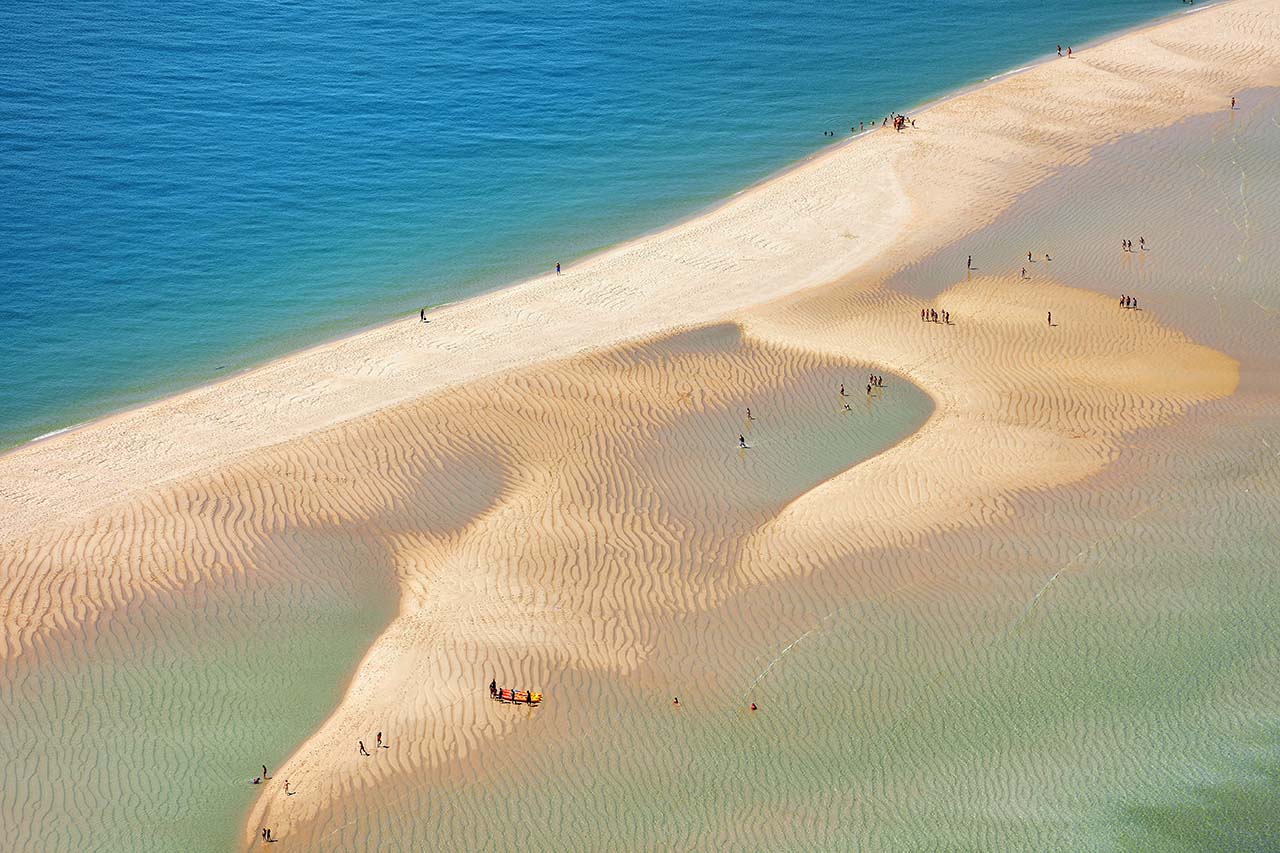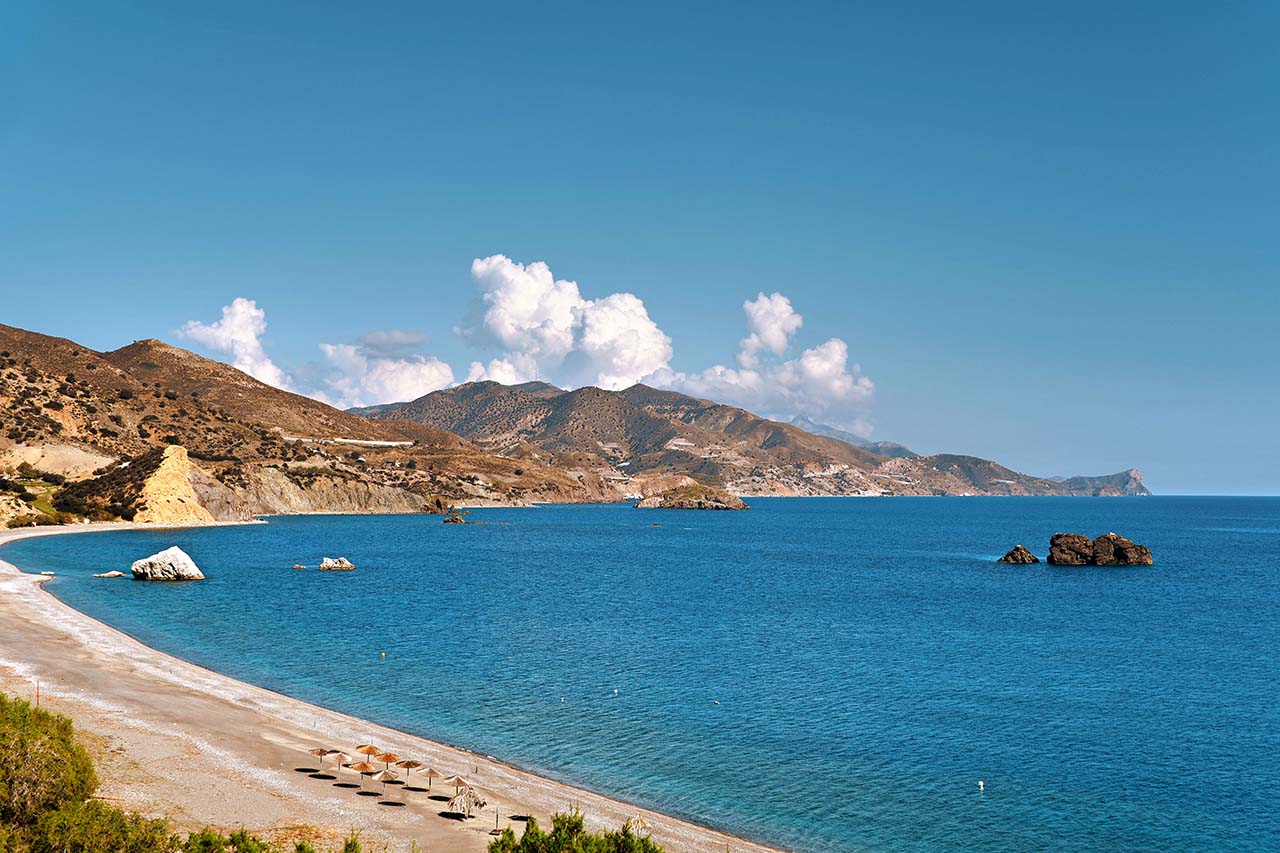The Portuguese Setubal It is in the club “the most beautiful bay in the world”. An enchanting palette of greens and blues at the confluence of the Grand Estuaire Sado River and rocky coasts with Mediterranean species, forests, peninsulas like that of Troyvery white beaches on the Atlantic Ocean that smell of lavender and rosemary. A panorama that becomes the favorite setting of influencers, who climb to the highest point of the city to take pictures.
READ ALSO: The 20 most beautiful beaches in Portugal


What to do on a weekend in Setúbal
He won the title 12 years ago, but the vocation to preserve beauty and the environment was born much earlier. Since the 1970s, Setúbal, the city of 120 thousand inhabitants about 40 minutes from Lisbonemphasized the extraordinary geographical conformation by surrounding itself with parks that extend to its neighborhood. Half of the territory is protected.
READ ALSO: The most beautiful villages in Portugal
Birdwatching in the Sado Estuário Nature Reserve
A ten minute drive east 50 thousand birds fill the Sado Estuary Nature Reserve (the only Portuguese river that flows from south to north), one of the most important wetlands in Europe: 23 thousand hectares where old salt marshes, reed beds, rice fields, cork oak forests, bird watching trails next to century-old mills such as the Moinho of the Sea of Mouriscatransformed into a museum (+351.26.57.83.090).
You can visit it by boat or on foot to admire the surroundings 200 species of birdsincluding storks and herons, and almost as many fish and molluscs.
Discovering the Bay of Setúbal among oysters and dolphins
In these regions, oysters are farmed or dolphins can be seen swimming freely at the confluence of fresh and salt water.
In the Bay of Setúbal there is one of the very few permanent colonies of these marine mammals, which was enriched last year by six newborns. A record in 40 years, since the dolphins of the Sado estuary have been monitored.
There are now around thirty of them. roazes-corvineiros the inhabitants, so called by the Portuguese fishermen because they break their nets to feed on rock croakers, which can be admired on boat trips from all over the bay.


Visit to the Casa da Baia
Their incredible story is told in the House of Baiaa perfectly renovated period residence in the centre, which also serves as a tourist office, café with indoor terrace, exhibition space, auditorium.


Stop at the Arrábida Natural Park
About the same distance from the city, but to the west, the Arrábida Natural Park: 10 thousand hectares of forests and scrublandincluding 35 kilometers of hilly Serra. In clear weather, from North Viewpoint you can see Lisbon and Sintra.
His name is read Rabidawith the soft r: derives from Arabic, means place of prayer, perhaps because of the presence of a beautiful Franciscan Monasteryand today it is considered a global biodiversity sanctuary.
ALSO DISCOVER: Madeira and Porto Santo: gardens, ocean, wild nature, relaxation on the two Portuguese islands
Limestone coasts overlooking the blue, fine sandy coves, often with a limited number of places, with gourmet restaurants and pretty names (Portinho, Galapos and Galapinho), Mediterranean microclimate, flora and fauna reminiscent of southern Italy, in the seabed. 1,400 protected species from the marine area of Professor Luiz Saldanha, which begins here, from the beach of Fig treeand extends over 38 kilometers until Cape Espichel.
The only problem is the cold water of the Atlantic, around 17 degrees even in summer. But the outside temperature is good all year round and this paradise is worth a visit or at least a long weekend.


Holidays for all tastes in Setúbal
Active holidays for sports enthusiasts
Trekking, cycling, coastering, kayaking, sailing, snorkeling, scuba diving: the possibilities are endless for those who love active holidays.
READ ALSO: Portugal on foot: the Coastal Path, along the Atlantic Ocean
Family activities
Setúbal is therefore an ideal destination for families, also thanks to the numerous activities organized by the Tourist Office.
READ ALSO: Portugal with children: destinations and experiences for family holidays
For fish lovers
Its fish market, moreover, with 5,000 tilesis one of the most beautiful and surprising in Portugal: in addition to fish products of all kinds and gigantic dimensions, it exhibits exotic fruits from the former colonies.
Until a century ago, they were here 140 canneriesespecially sardines, and the Giacometti's Work Museum tells its story by interweaving it with that of the city, fishing capitalwith a modern, playful and panoramic layout, even with a period shop that has remained intact.
Sleeping among mills and convents
You will then be spoiled for choice: sleep in a luxurious country house or in a real converted mill and climb up to the imposing Fort of São Filipe, from the 16th centuryto have a drink on the terrace with a view of the famous bay.
ALSO READ: Moving to Portugal: The best places to live and work
Or let yourself be enchanted by Convent of JesusManueline style (predecessor of “de los Jerónimos” in Belém), which features spectacular twisted columns made of Arrabida breccia, a unique stone in the world, 18 azulejo panels, concert hall acoustics and a background of Gregorian chant choirs, to remember the sad history of the nuns, practically imprisoned here.
You will discover it in the adjacent museum, a treasure chest full of many art treasures, narrated by excellent guides.


Visit to the historic center of Setúbal
At the same time, you can discover the historic center, which is not revealed at first glance, with the working-class neighborhoods, especially those of the fishermen like the Troinothe pedestrian zone around the House of Culture, the elegant houses, the small shops left in mothballs.
Or you can enjoy the sweetness of Portuguese life, between coffee And small restaurants around the seafront, where the main dish is cuttlefish, fried chocolatewith fries, but there are also some excellent Michelin-starred restaurants.
The flavors of Setúbal
Gastronomy and wine are the second reason why many French, Spanish and Americans choose Setúbal as a travel destination.
The agro-pastoral economy, vineyards and olive groves, honey, goat cheese, citrus fruits, as well as the freshest fish, are the basis of its slogan “a world of flavors” and menus at affordable prices.
But above all, what attracts tourists is a wine that softens the palate and shines like gold, the Muscat of Setubalfor which a brotherhood and a brand were created which delimit the production area.


Cellar tastings
The old cellars with their century-old barrels are packed for tours and tastings: they record up to 40,000 visitors per year.
In particular, in the field of Azeitea village that seems to come out of a Saramago novel, where the azulejos are still made by hand as in the 17th century, where people live in low houses in the middle of the alleys, eat in taverns from another century and remember those of the Romans. For fishing, but also to bring back the Moscato di Alessandria, which gave birth to the Moscatel.


